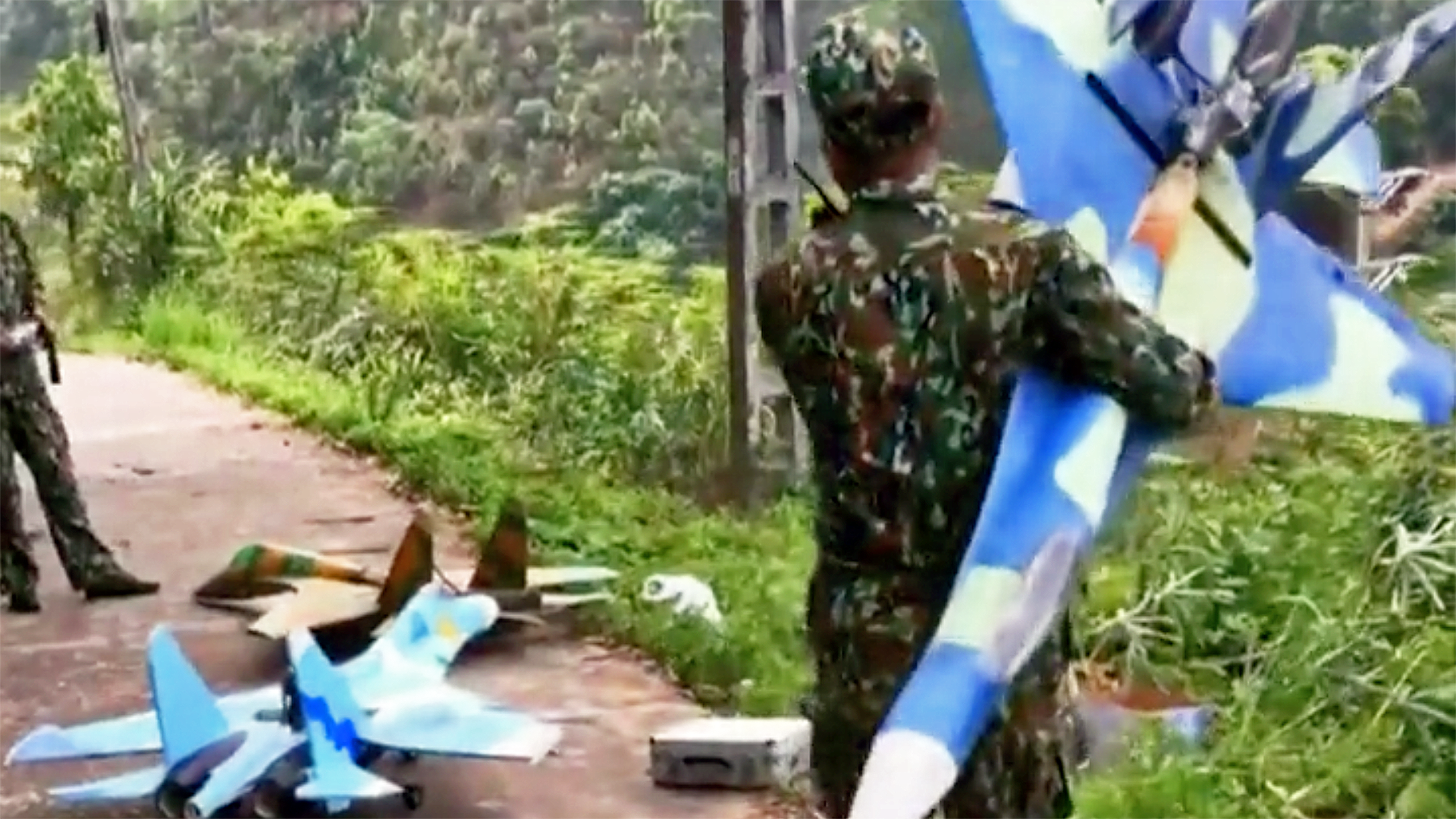The People’s Army of Vietnam has been training with hand-launched radio-controlled (RC) planes during military exercises. At least some of the aircraft, which don’t seem to differ much in size from an average hand-launched commercial drone, for instance, are said to have come from RC hobby clubs to provide a cheap and simple way to make exercises more realistic.
Videos of Vietnamese soldiers launching the RC planes have been circulating on social media since at least 2021, with a more recent video having emerged on Jan. 12. However, it’s unclear when the footage itself was recorded. In the clips, a variety of RC planes can be seen painted with colorful camouflage patterns, with some of the planes being modeled after the Flanker family of combat jets.
The War Zone contacted the Twitter account that posts these videos for more information but is still awaiting a response.
In the most recently shared video included above, a Vietnamese soldier can be seen lifting one of the RC planes over his head as its piston engine powers up. Once ready and sufficiently spooled up for the flight, the soldier throws the RC plane forward, and it takes to the air eventually flying out of frame.
Some of the clips from 2021 are largely similar, except RC models of aircraft more similar to general aviation turboprop planes are also seen at the soldiers’ feet. In each instance, the captions associated with the videos explain that the Vietnamese Army relies on these RC planes to give small-scale exercises a more realistic feel without deploying actual aircraft, which requires significant logistical support, manpower, and associated costs, usually measuring in the tens of thousands of dollars per flight hour. Just being able to launch these RC planes wherever needed on demand is also a far more flexible and less cumbersome, albeit less realistic, training solution.
The Vietnamese People’s Air Force’s (VPAF) aircraft inventory is not all that expansive, making it so the assets the country has to employ during local exercises could be limited. Although the metrics vary depending on the source to some degree, the VPAF currently has roughly 150 tactical jets and trainers in all, with its top-of-the-line fighter being of the Flanker series.
While the specifics of the exercises that were filmed were not mentioned, the captions did explain that the RC planes can be used to simulate both friendly and enemy aircraft. In a scenario where, for example, a manned aircraft would be used in a country like the United States for a threat replication exercise to simulate the modern capabilities of adversarial aircraft, Vietnam could use these RC planes as a less sophisticated way to perhaps test the targeting systems of anti-aircraft weapons, practice engagement procedures and gunnery, or other operations involving an air element.
On the simpler side of the equation, teaching troops how to best survive the surprise presence of an enemy tactical jet would be useful, and these RC planes could provide that training at a very low cost while still offering some level of realism. Even using them as surrogates for marauding drones could make sense, as well, especially in an age where low-end unmanned aircraft pose a huge risk to troops on the battlefield. Even the U.S. Marine Corps in the past has used lower-end drones for destructive live-fire training for weapons like Stinger missiles.

Interestingly, a separate but related post shared by the same Twitter account in June 2021 highlights the purportedly large RC plane community in Vietnam and how it often works closely with the Vietnamese military to support their exercises. The account explains that the People’s Army of Vietnam sometimes directly tasks these hobbyist groups with building “mock targets for anti-aircraft exercises.” This information would suggest that these RC planes are sometimes shot down during the demonstrations, but none of the videos shared show that taking place.
Regardless, while the Vietnamese Army’s use of RC planes during military exercises may speak to the limited number of assets they have at their disposal for smaller-scale exercises, the choice is nonetheless resourceful.
Contact the author: Emma@thewarzone.com
